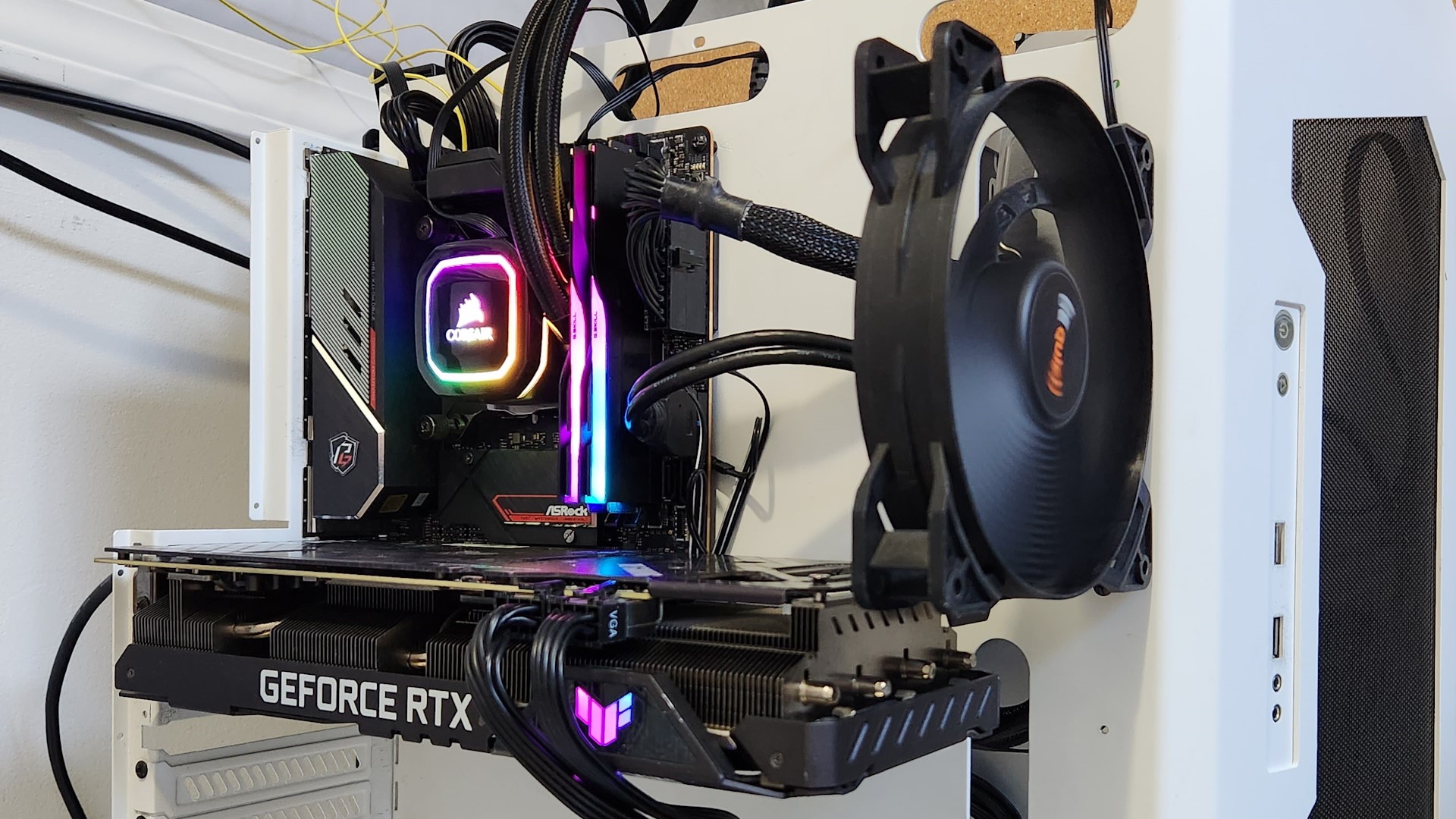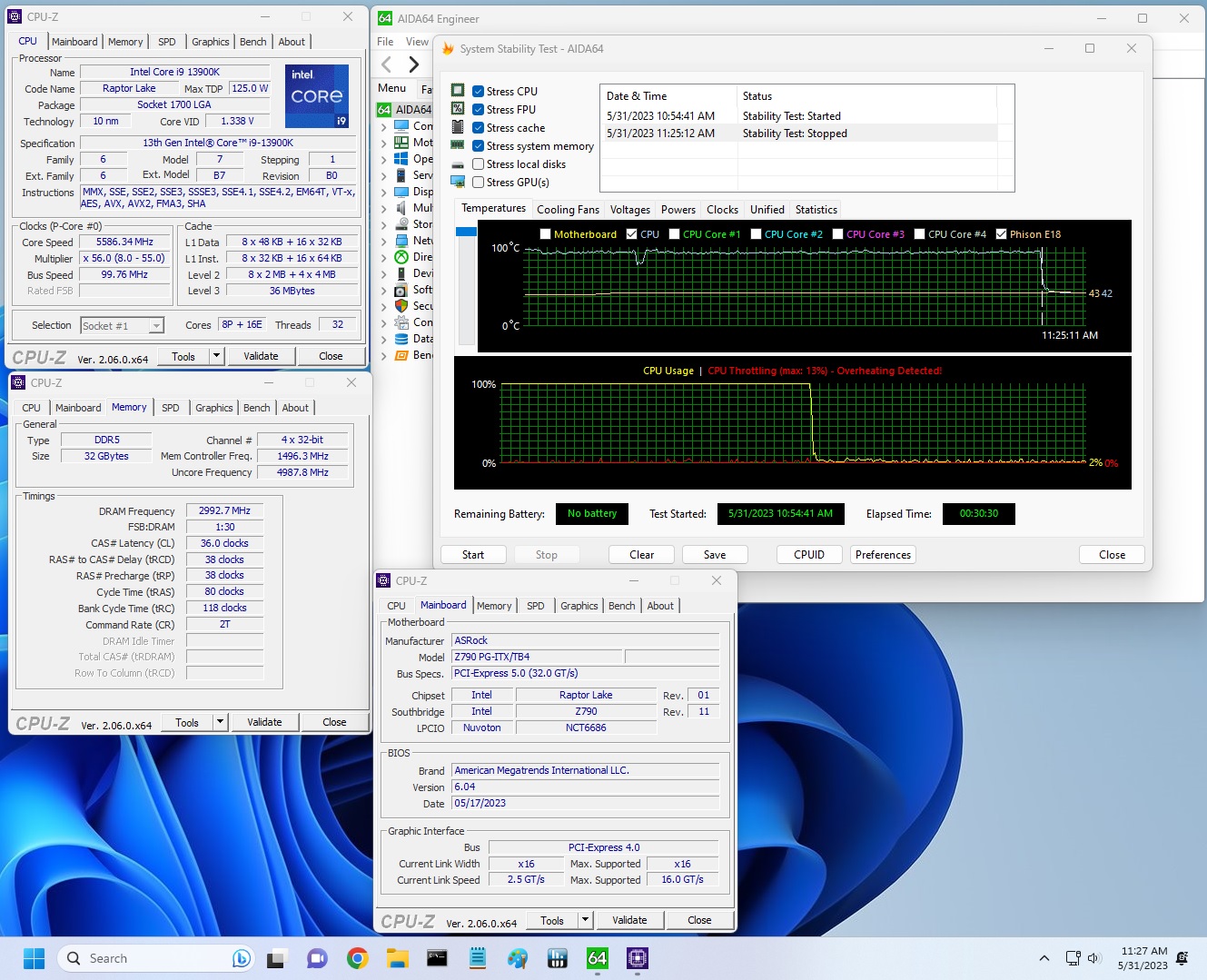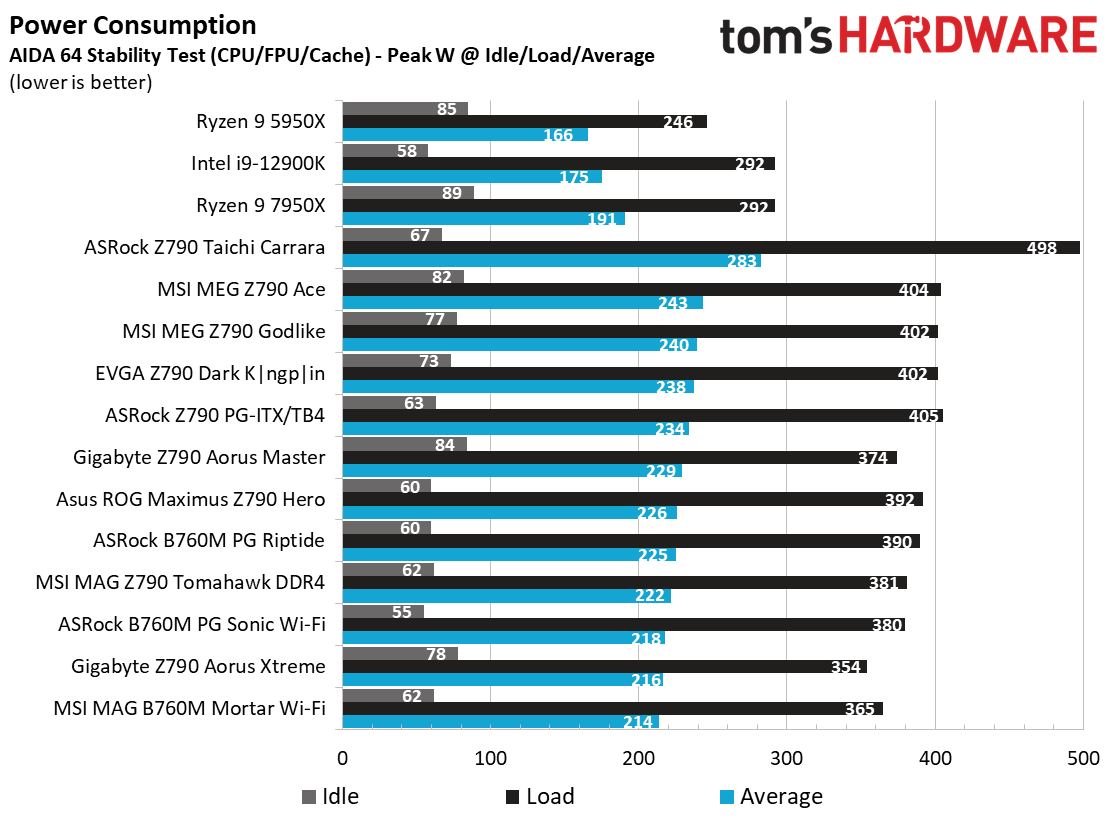Why you can trust Tom's Hardware
Benchmark Results
Our standard benchmarks and power tests are performed using the CPU’s stock frequencies (including any default boost/turbo), with all power-saving features enabled. We set optimized defaults in the BIOS and the memory by enabling the XMP profile. For this baseline testing, the Windows power scheme is set to Balanced (default) so the PC idles appropriately.
Synthetic Benchmarks
Synthetics provide a great way to determine how a board runs, as identical settings should produce similar performance results. Turbo boost wattage and advanced memory timings are places where motherboard makers can still optimize for either stability or performance, though, and those settings can impact some testing.
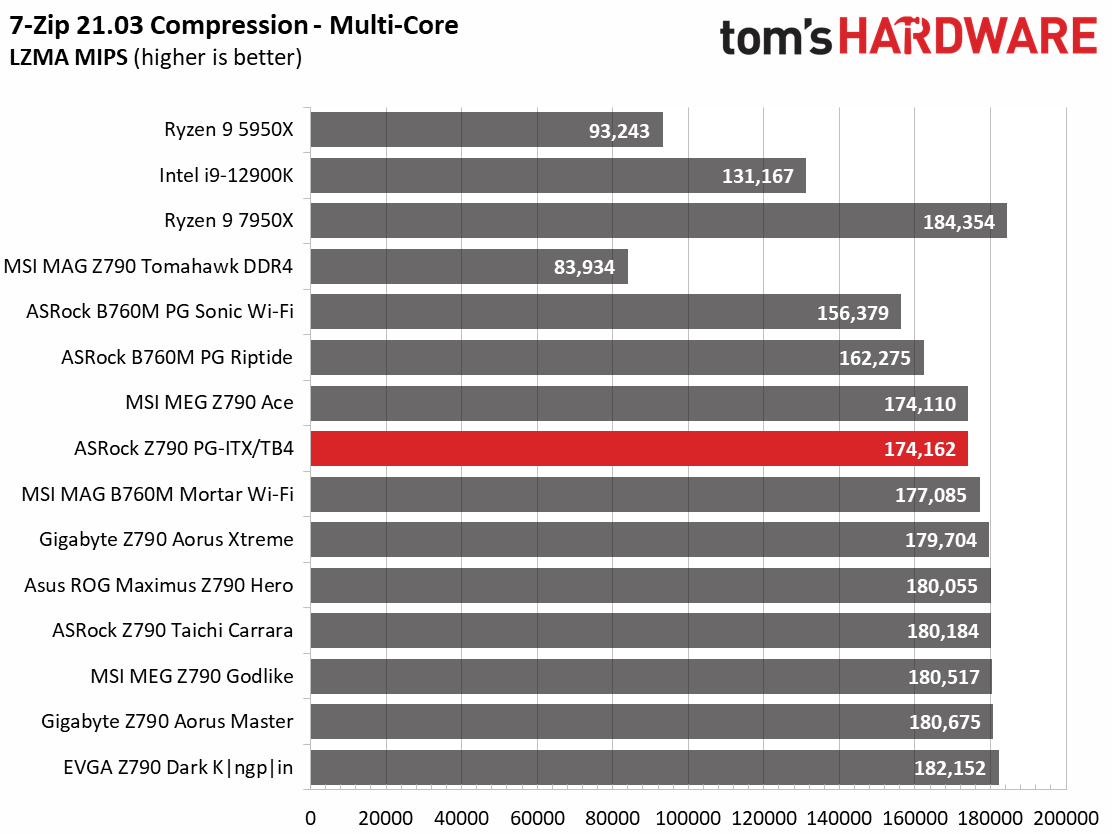
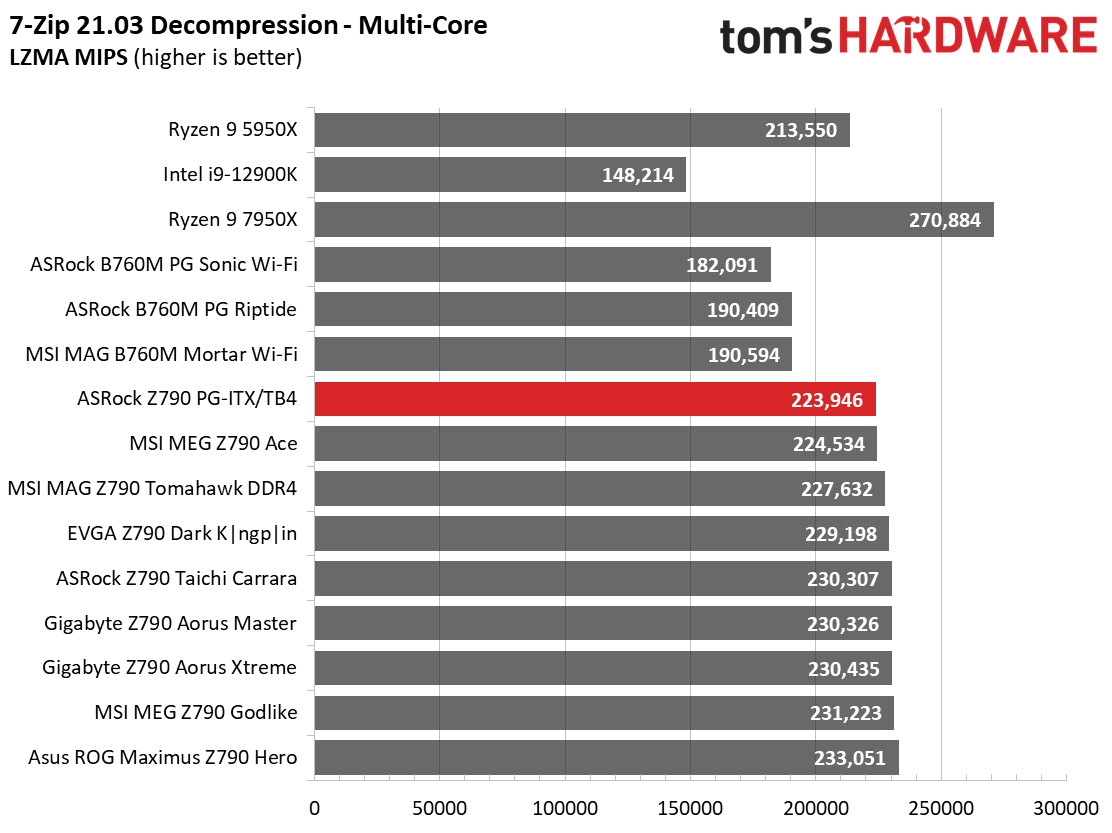
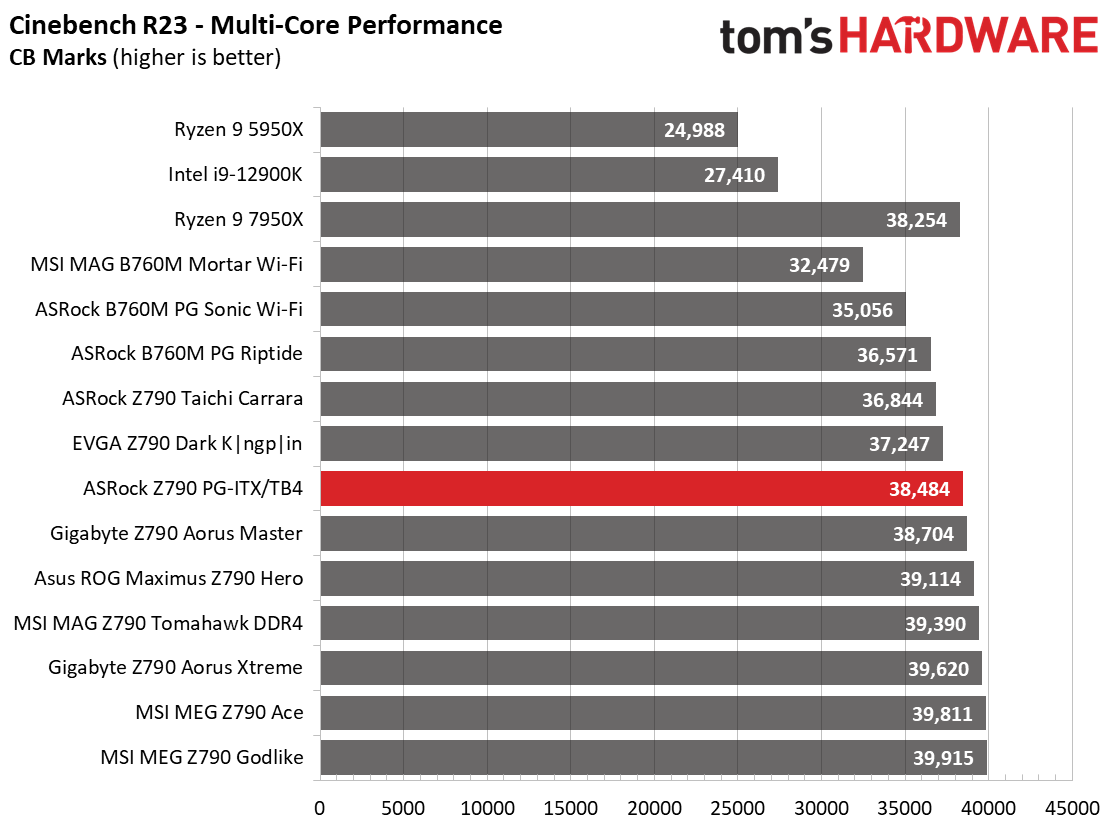
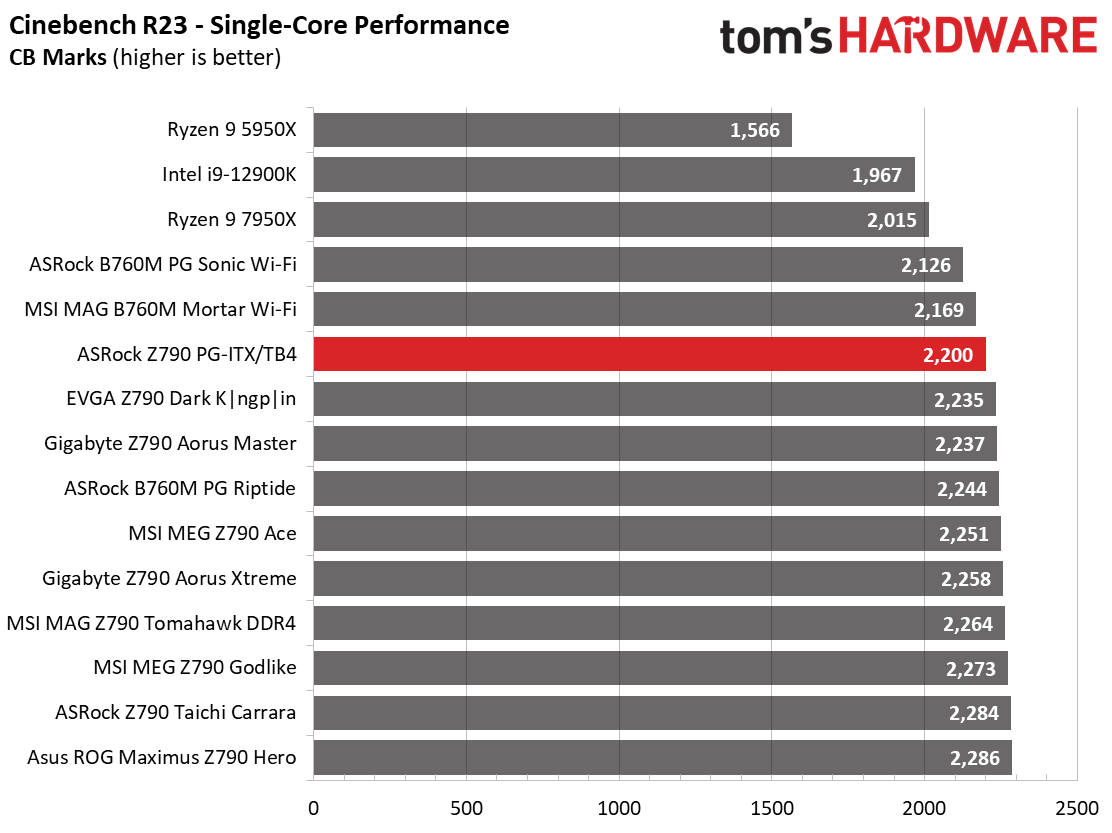
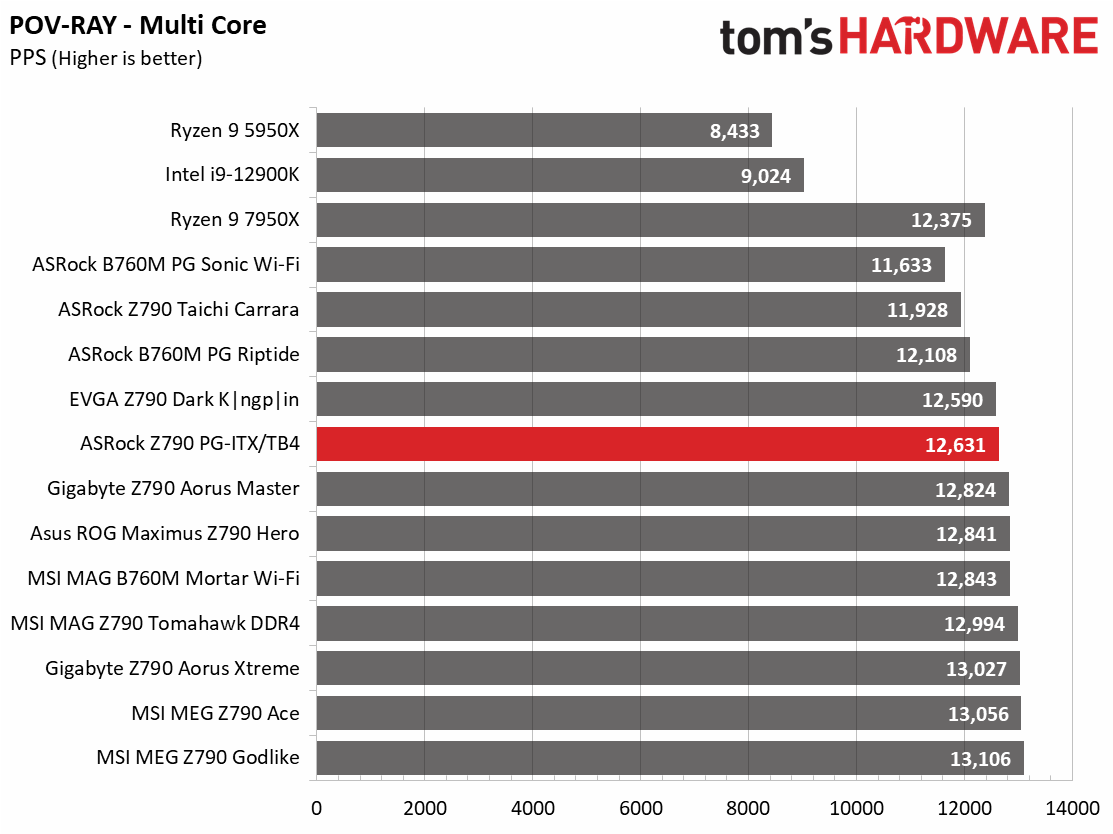
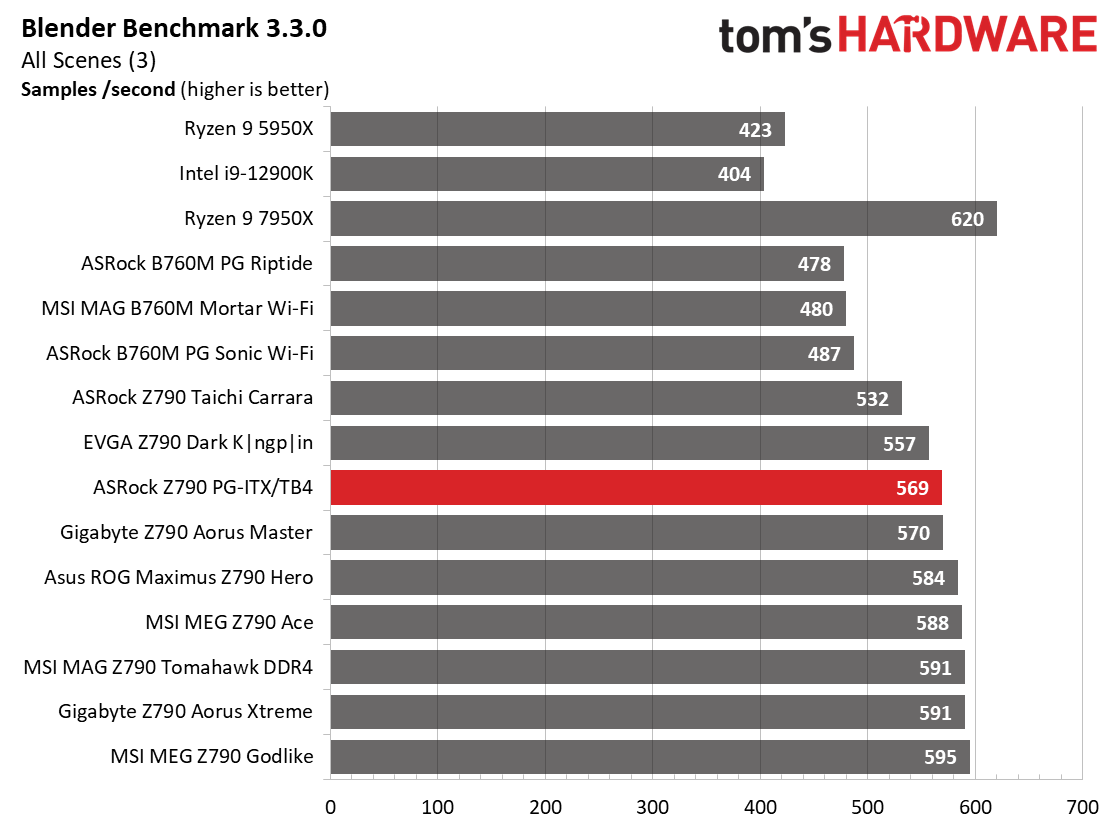
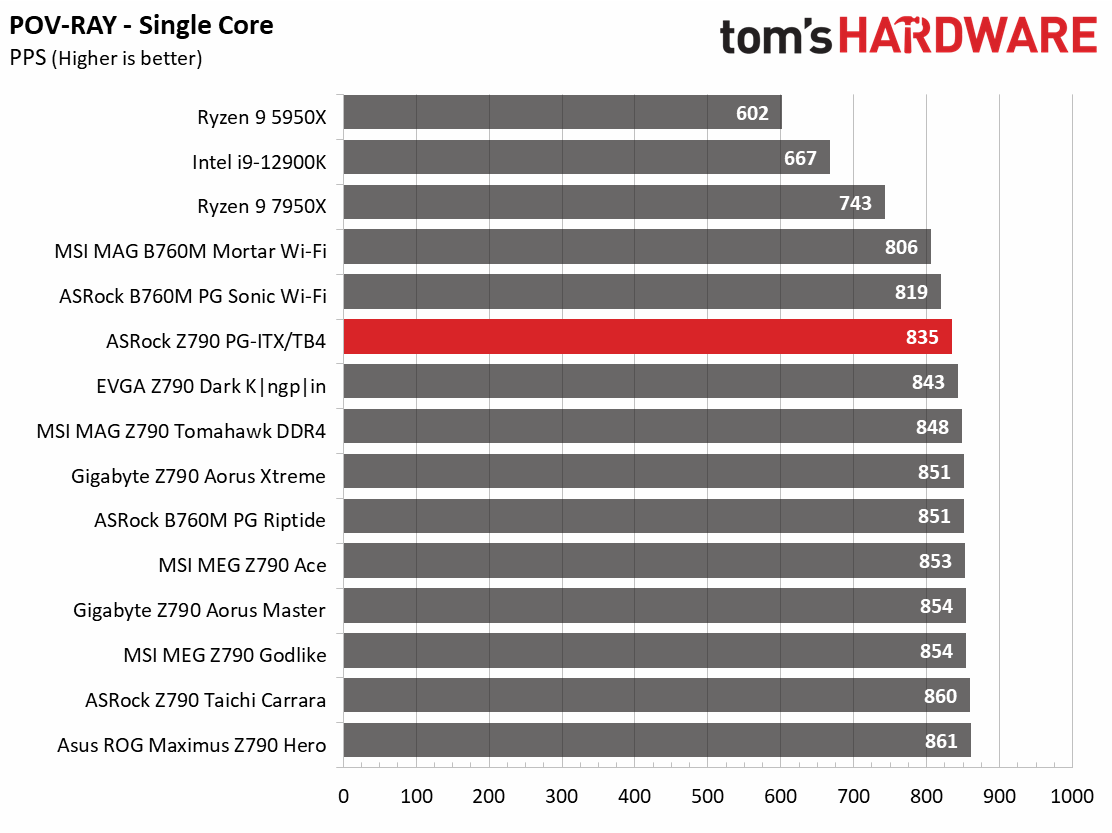
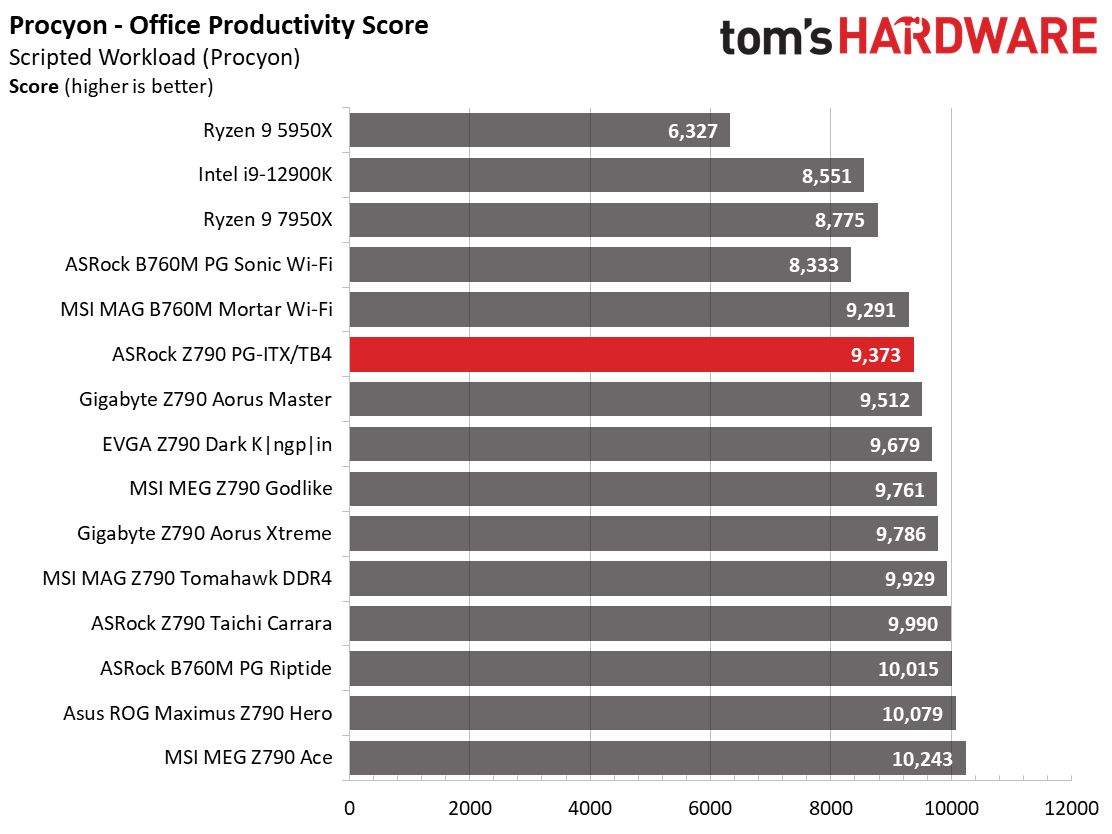
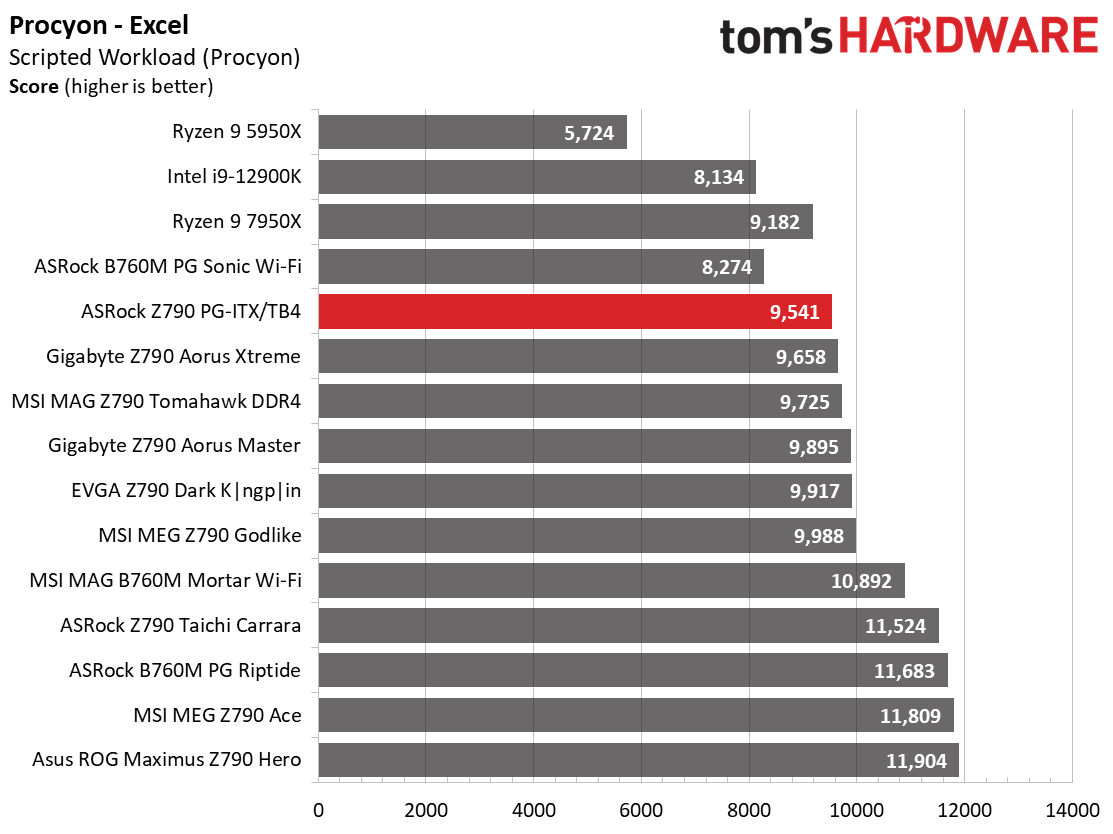
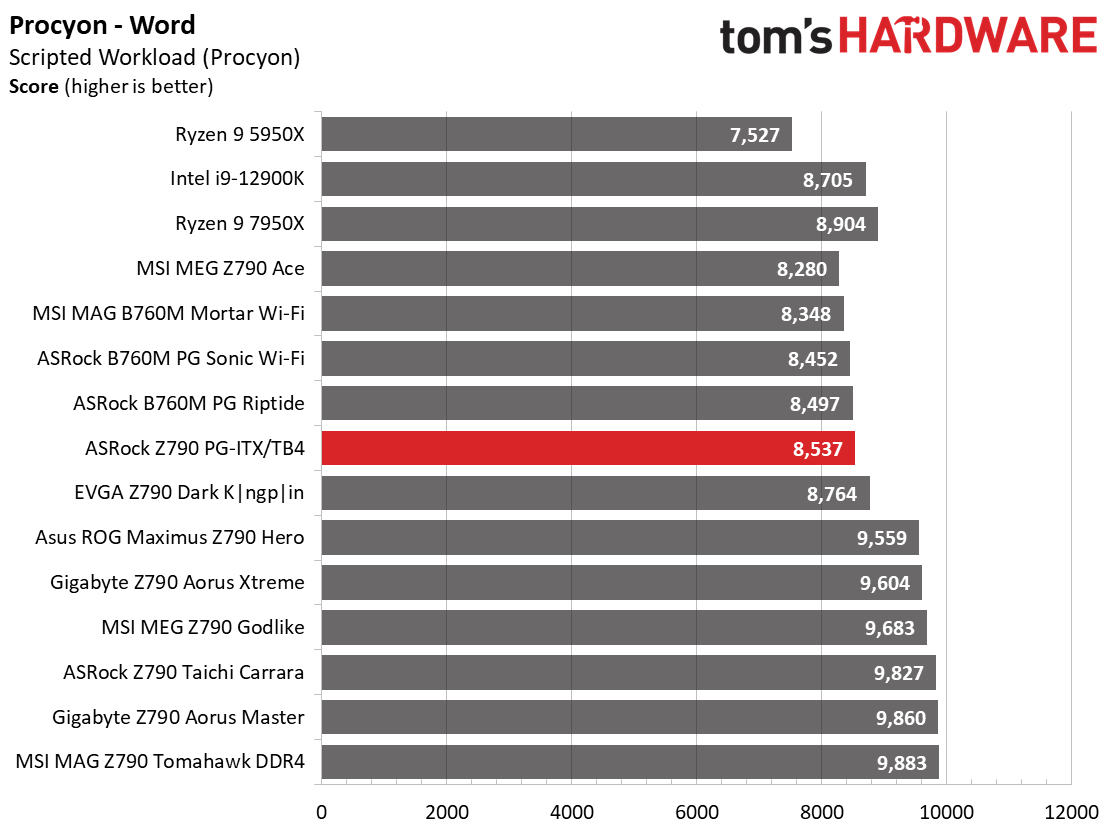
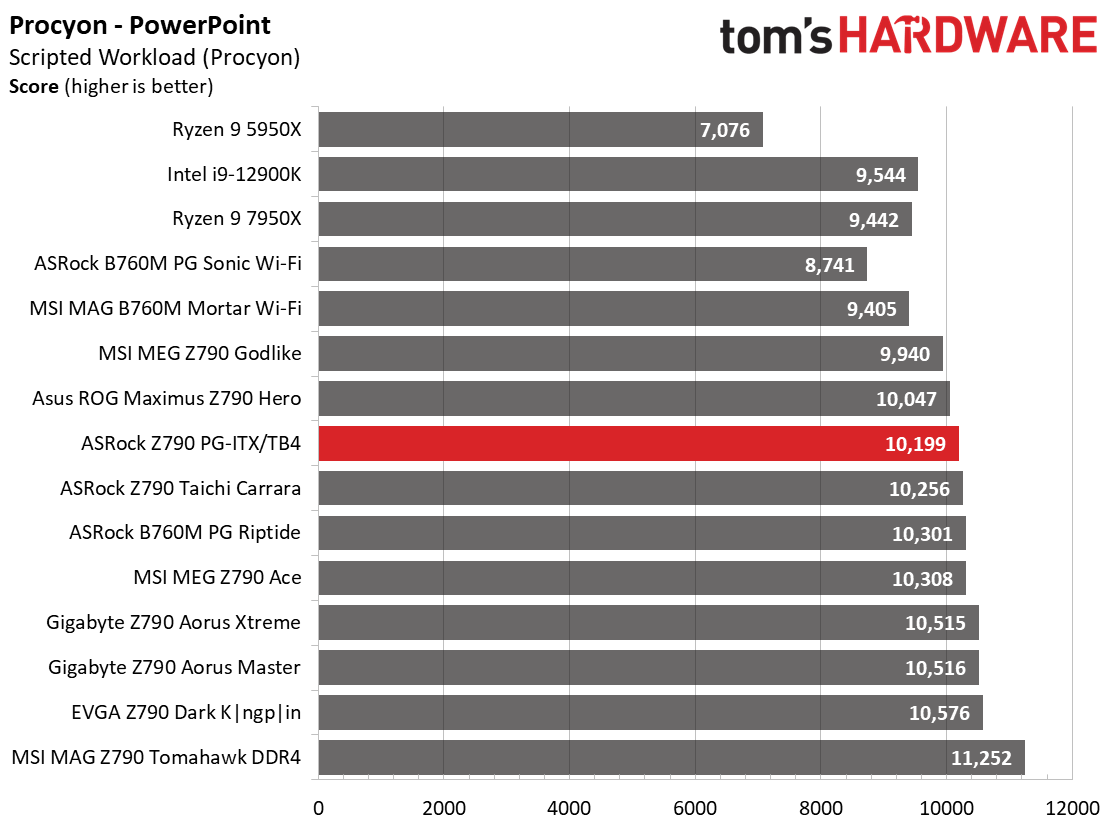

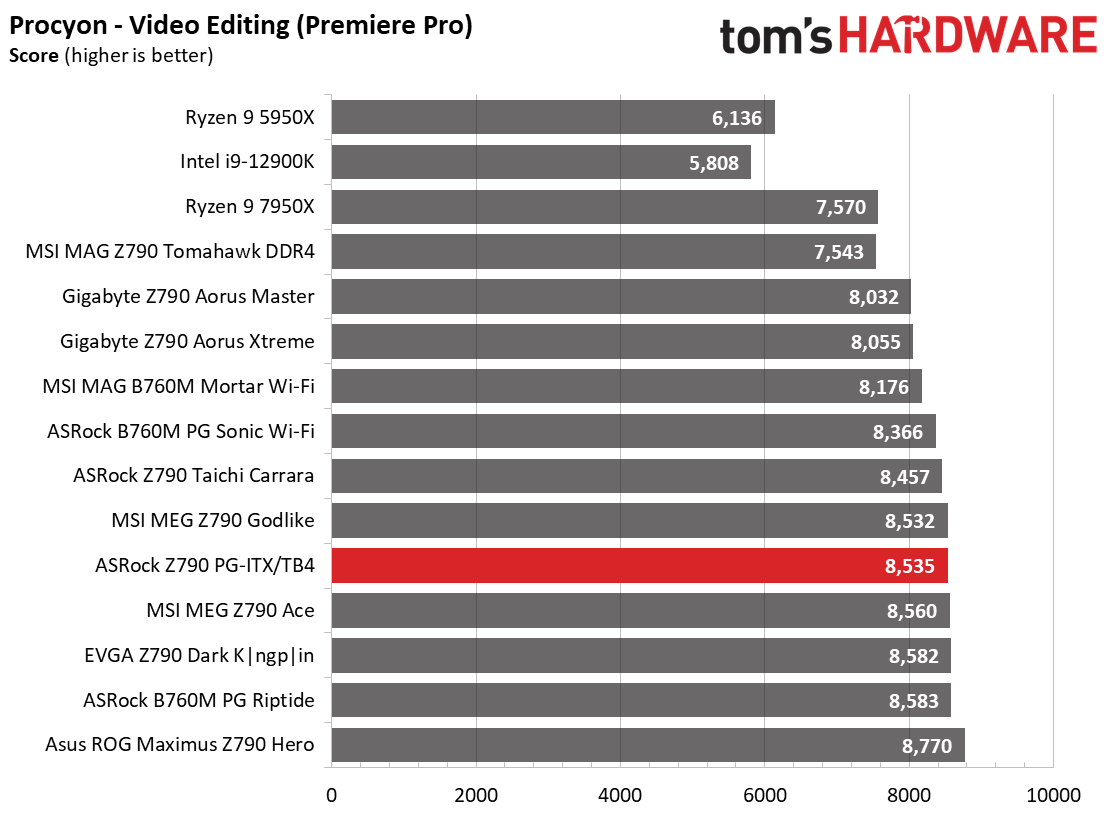
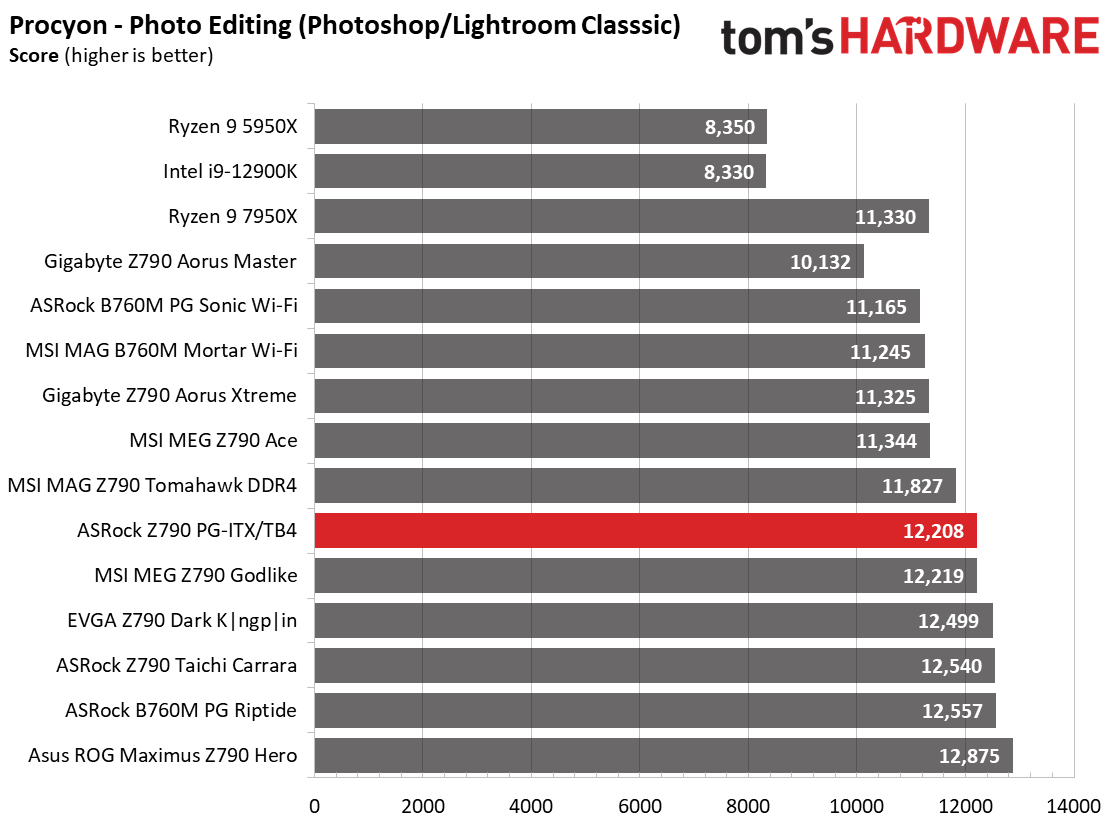
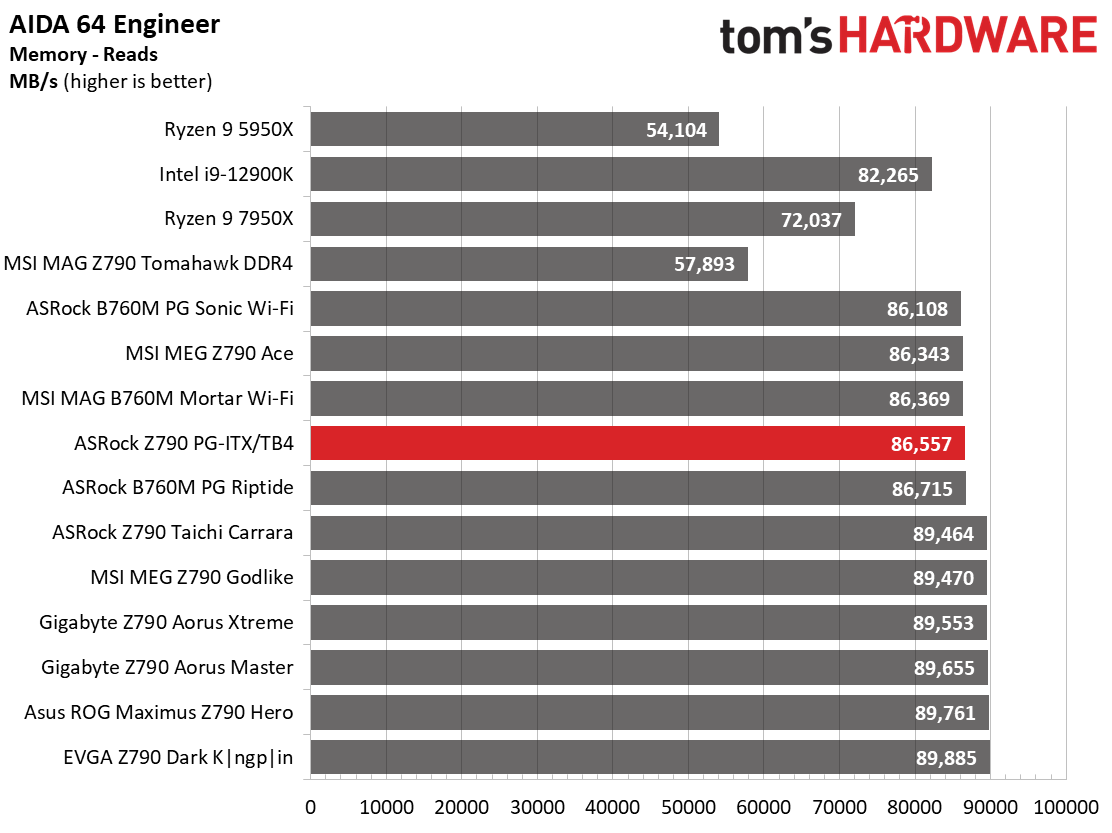
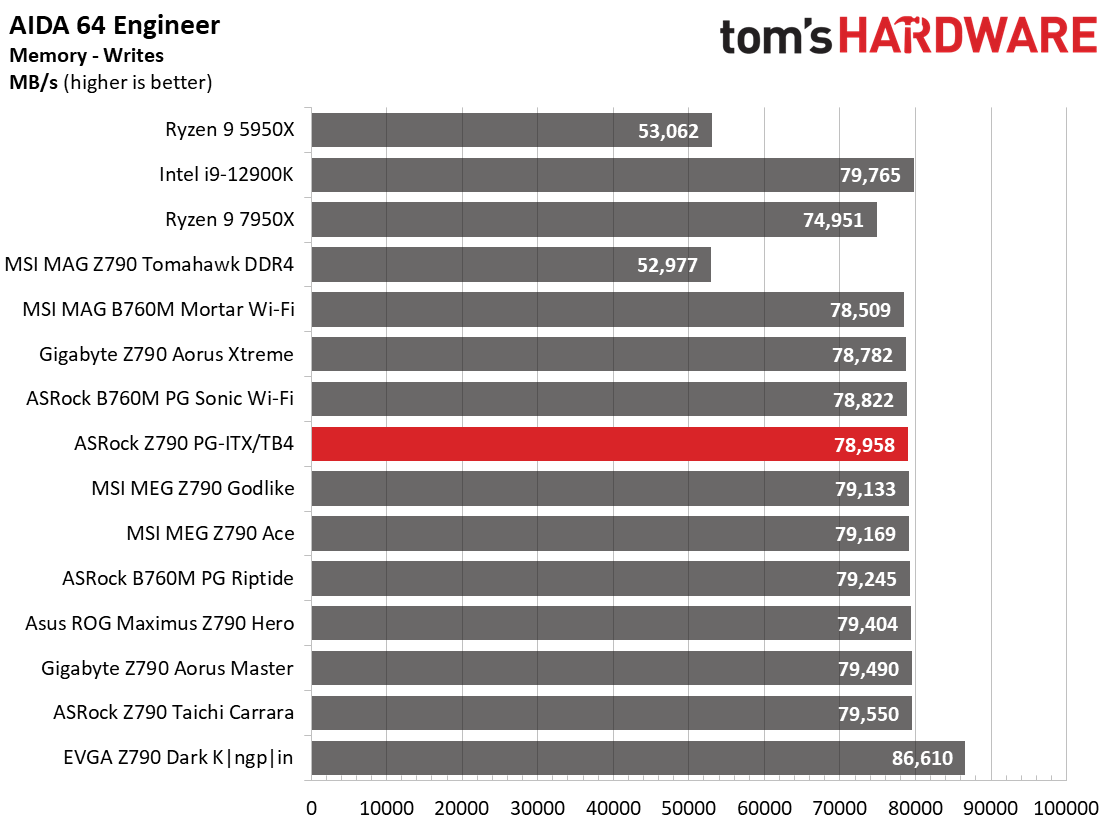
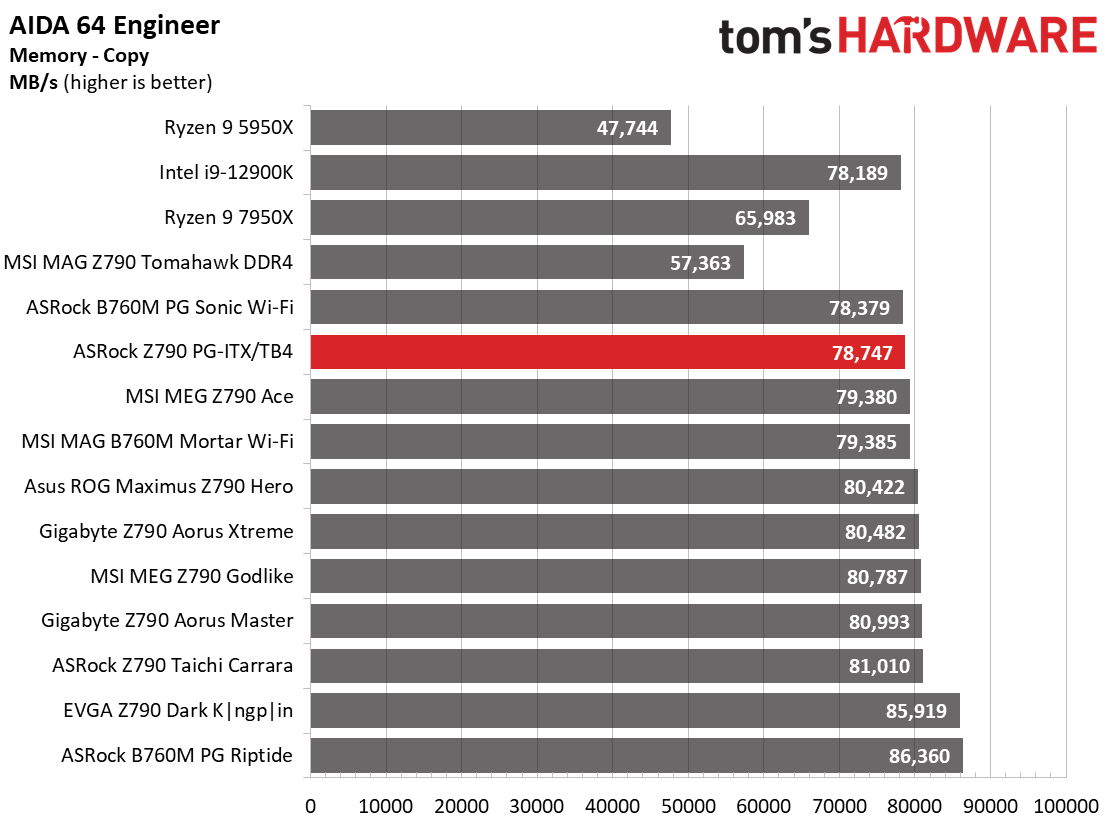
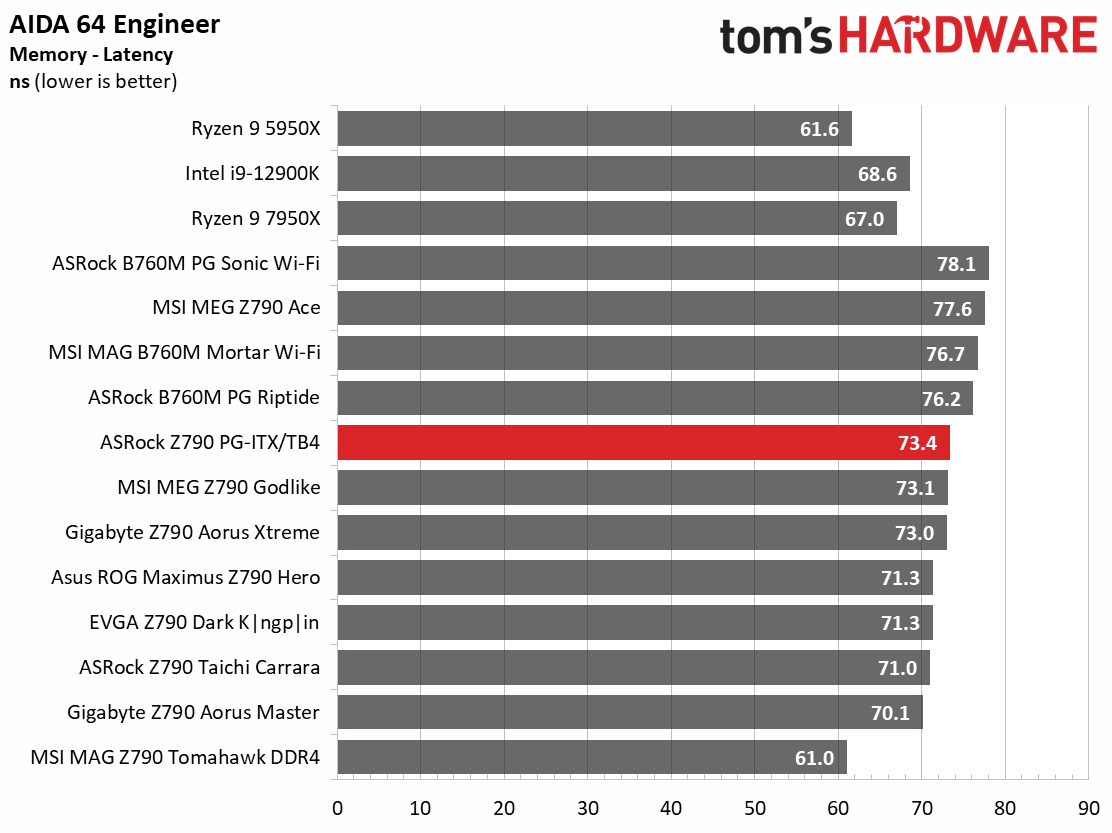
In our synthetic benchmarks, the Z790 PG-ITX/TB4 had average to or slightly below average results across the board. Like we’ve seen with a lot of these boards, anything that’s a longer-running, multi-threaded benchmark tends to take a hit more than any lightly threaded or single-threaded apps. Intel and the motherboard partners do their best to get everything out of these chips.
Timed Applications
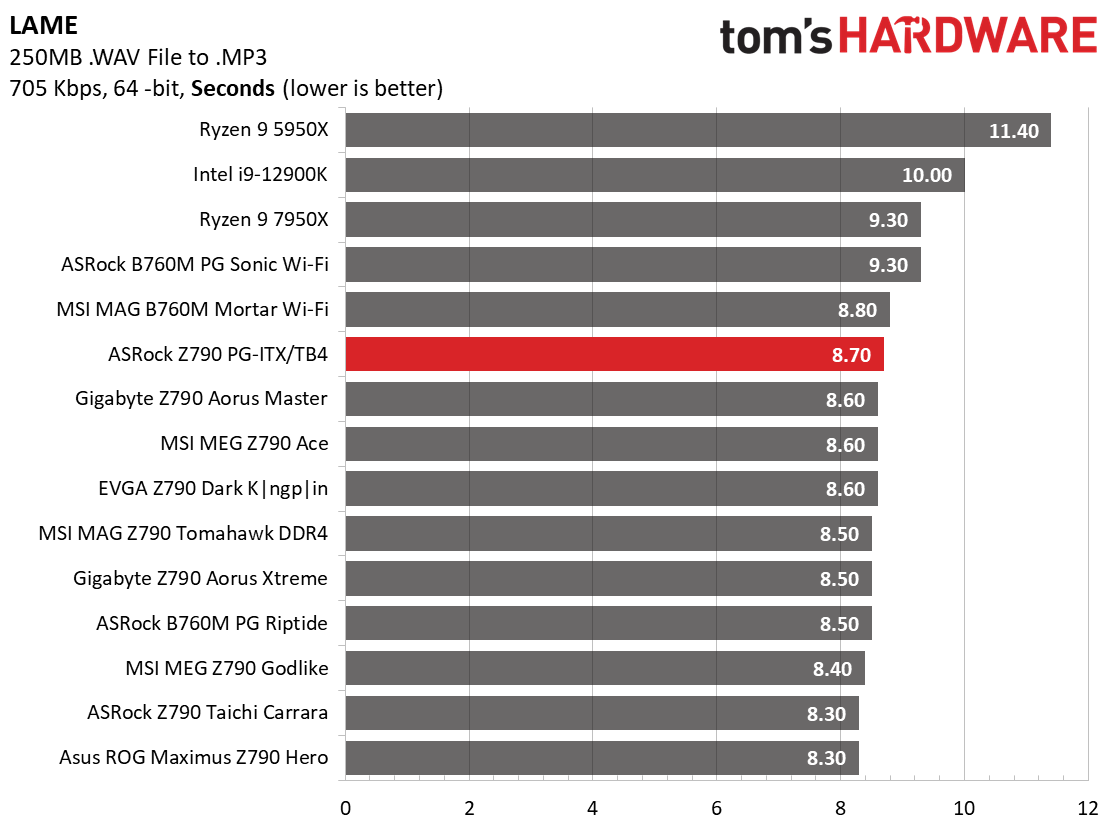
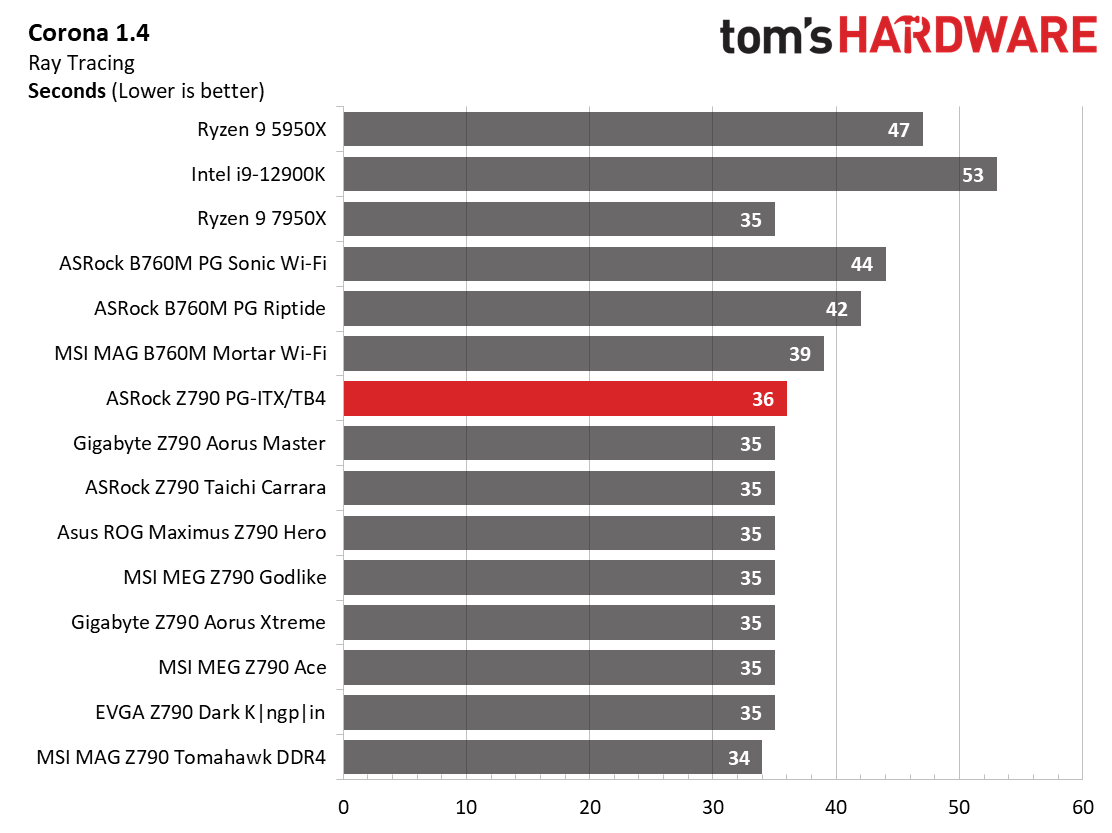
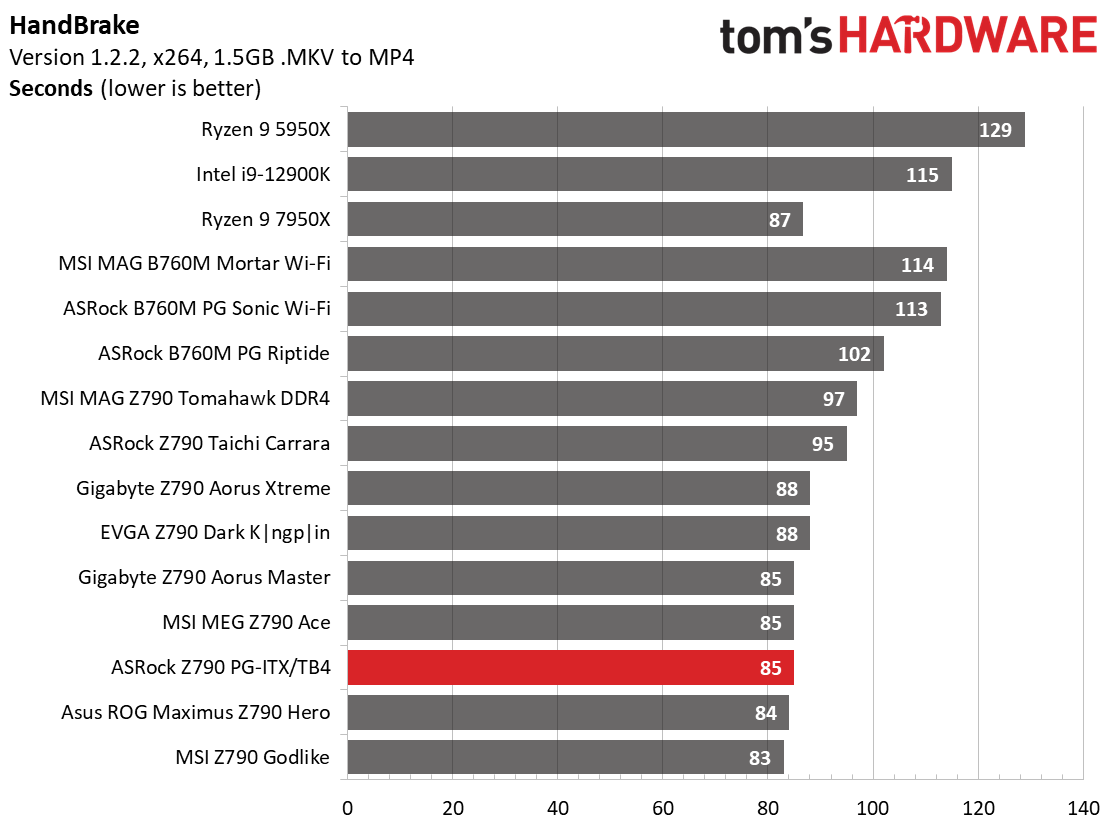
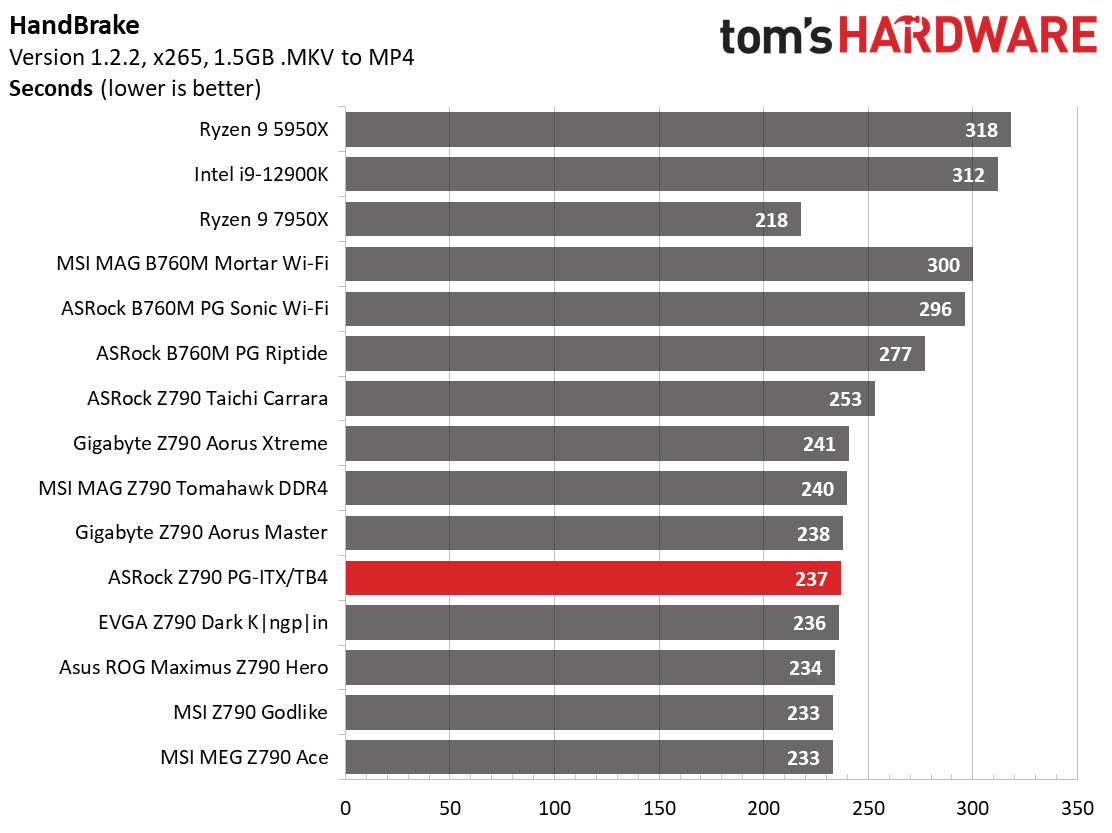
In the LAME and Corona applications, our board was just on the slower side of average in each, mixing in with the larger group of results packed together with similar times. Handbrake testing proved to be average or just faster than average.
3D Games and 3DMark
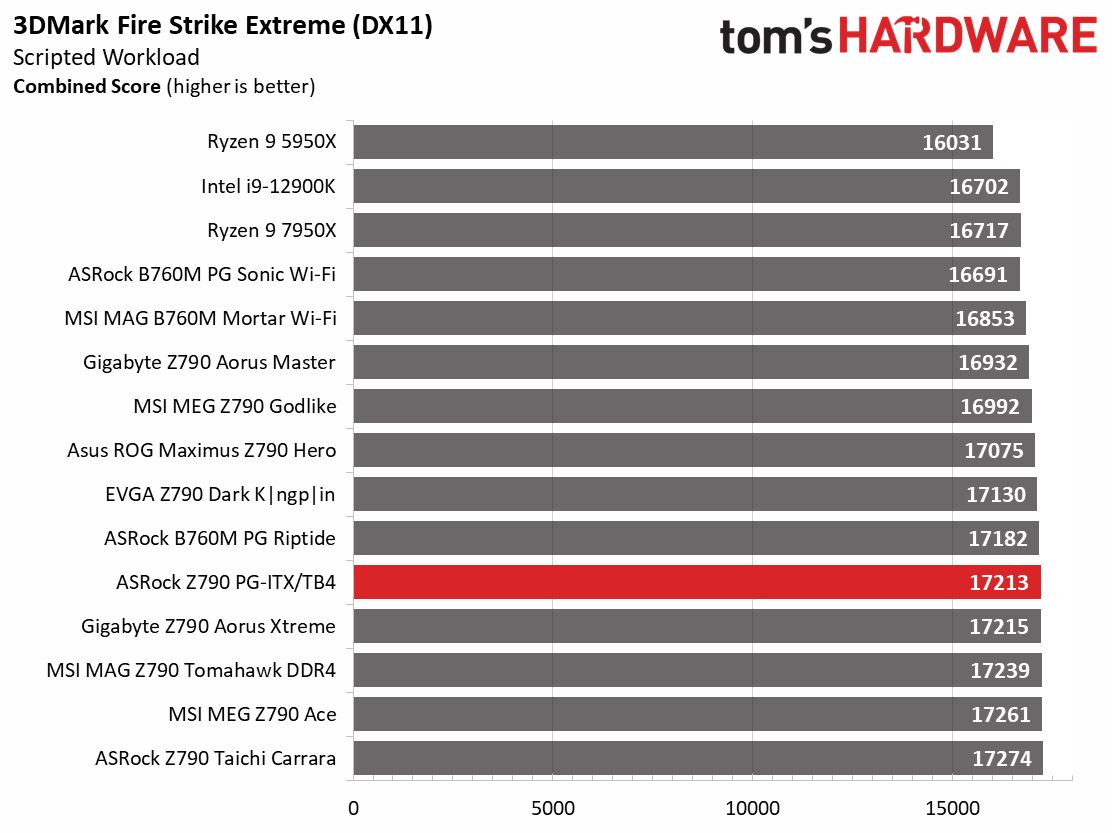
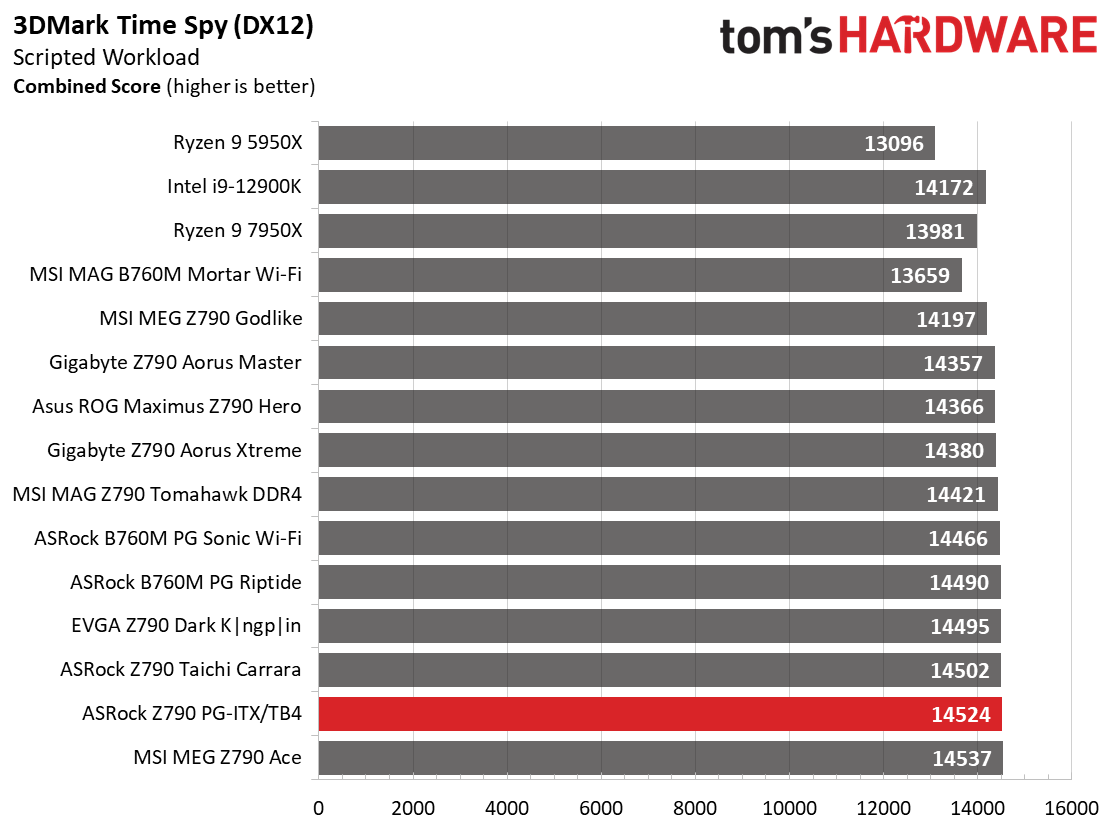


Starting with the launch of AMD’s Ryzen 7000 platform, we’ve updated one of our games, F1 21 to F1 22, while keeping Far Cry 6. We run the games at 1920x1080 resolution using the Ultra preset (details listed above). As the resolution goes up, the CPU tends to have less impact. The goal with these settings is to determine if there are differences in performance at the most commonly used (and CPU/system bound) resolution with settings most people use or strive for (Ultra). We expect the difference between boards in these tests to be minor, with most falling within the margin of error differences. We’ve also added a minimum FPS value, which can affect your gameplay and immersion experience.
The Mini-ITX ASRock board is more than competent in gaming. In the tightly packed 3DMark results, our test board rose toward the top and did so as well when gaming in F1 22 and Far Cry: 6. Again, most of the datasets are close together, and without a frame counter on the screen, we you wouldn’t be able to tell the difference between them.
Overclocking
When overclocking, we aim to increase the power and add stress to the VRMs. We do so by increasing the clock speed and voltage until we’re at the thermal threshold for the processor during stress testing. However, where these CPUs are allowed to run with ‘boost’ speeds, those speeds are closer to the limit than ever before.
Get Tom's Hardware's best news and in-depth reviews, straight to your inbox.
With our Core i9-13900K, the approach was a bit different. We had to lower the voltage from what was recorded during stress tests to overclock our chip. We increased the clock speeds of the “P” and “E” cores by 100 and 200 MHz, respectively, over the turbo boost and limited by our cooling. We ended up with 5.6 GHz P core and 4.5 GHz E core clocks using about 1.34V (from DMM). Temperatures peak at or just under the throttling point with this configuration. And as we’ve noted elsewhere, this is the intended performance for Intel’s flagship CPU.
Overclocking on the PG-ITX/TB4 took longer to dial in than many others. It didn’t seem to take to setting all cores, so I had to set the turbo to the required clock speeds. I settled around 1.32V (less than stock, note) with some throttling, but managed to run stable throughout the 30-minute stress test. On the memory side, I dropped our Kingston Fury Beast DDR5-6000 kit in the system, enabled XMP, and tested it without issue, as expected. Our DDR5-7200 kit won’t play nice as the board only supports up to DDR5-7000. All of the other comparable Z790 Mini-ITX boards list much higher support, at least on paper.
Power Consumption / VRM Temperatures
We used AIDA64’s System Stability Test with Stress CPU, FPU, Cache and Memory enabled for power testing, using the peak power consumption value. The wattage reading is from the wall via a Kill-A-Watt meter to capture the entire PC (minus the monitor). The only variable that changes is the motherboard; all other parts remain the same. Please note we moved to use only the stock power use/VRM temperature charts, as this section aims to ensure the power delivery can handle the chip even when overclocked. Since we’re using less power to get more clocks, those datasets are more novel than useful. We’re also temperature limited on the processor, so adding more power isn’t possible without increased throttling.
Idle power consumption on our Z790 PG-ITX/TB4 peaked over the 400W mark (250W+ for the CPU), something typically reserved for only the high-end boards. Idle power use was right around the average, sitting at 63W.

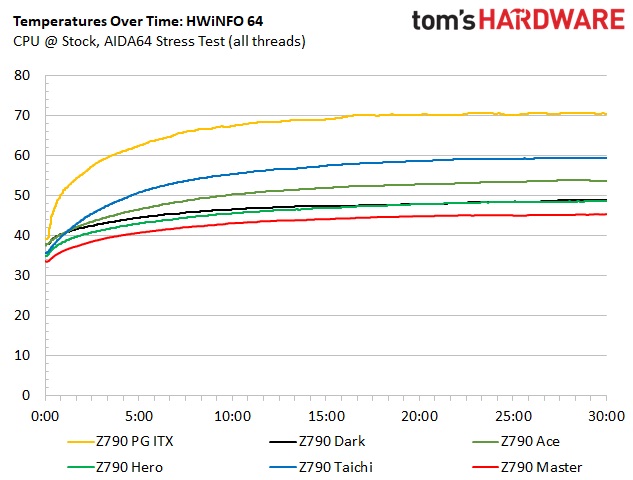
VRM temperatures on this board were warm, especially considering there’s active cooling. According to the internal sensor on the board, temperatures peaked at almost 90 degrees Celsius during our testing (230W stress test load). While that’s fairly hot, the SPS MOSFETs used are goodfor well over 110 degrees Celsius, so there’s some headroom. Make sure you have adequate airflow in your chassis if you plan to run this board under prolonged, heavy workloads.
Bottom Line
ASRock’s premium entry in the Mini-ITX Z790 space offers users nearly off of the bells and whistles. The biggest draw to this board is are the two Thunderbolt/USB4 40 Gbps Type-C ports, which competing options don’t offer (at least near this price range). In fact, this is the least expensive way into integrated TB4/USB4 on a motherboard (the least expensive ATX is the Z790 Taichi at ~$500). Additionally, the board offers Killer-based networking with Wi-Fi 6E, a flagship-class audio codec, and more. Performance was slightly below average across many tests due to the processor throttling because of thermals, but it was otherwise performant in lightly threaded applications and gaming. While its appearance may not stand out (no integrated RGBs) as the best looking, it’s certainly not a turn-off.
Regarding competition, each major board partner has a Mini-ITX Z790-based option in its product stack. Gigabyte has the Z790I Aorus Ultra ($359.99), MSI has its Z790I Edge Wi-Fi ($359.99), and the most expensive option, by far, is Asus’ ROG Strix Z790-I Gaming Wi-Fi ($434.99). Asus is the only option that offers a PCIe 5.0 x4 M.2 socket among these boards, and it also has 40 Gbps TB4/USB4 ports like our ASRock. Other differences include the unique audio solution with a built-in DAC, and perhaps the appearance. The MSI comes with four SATA ports and three M.2 sockets, while the Gigabyte falls short in storage with two and two, respectively.
Ultimately, ASRock’s Z790 PG-ITX/TB4 is a handsomely equipped Mini-ITX solution for 12th- and 13th-generation Intel processors. Not only is the price right, but it’s the most well-balanced ITX offering among all board partners at a fair price. If you want everything the platform offers (a PCIe 5.0 x4 M.2 socket), you must pay considerably more and get the Asus. If you’re looking for a Mini-ITX motherboard that won't break the bank and still has the features most users want or need, be sure the Z790 PG-ITX/TB4 is on your shortlist.
MORE: Best Motherboards
MORE: How To Choose A Motherboard
MORE: All Motherboard Content

Joe Shields is a staff writer at Tom’s Hardware. He reviews motherboards and PC components.
-
ocer9999 They always offer really good price / features on the boards and their ITX motherboard are actually pretty good. The tier1 brands like Asus you have to pay a big premium for what you get here.Reply
